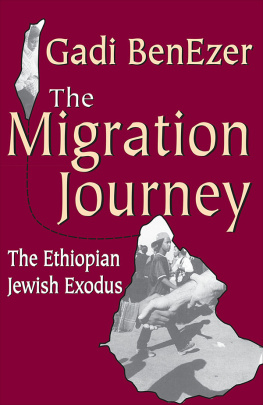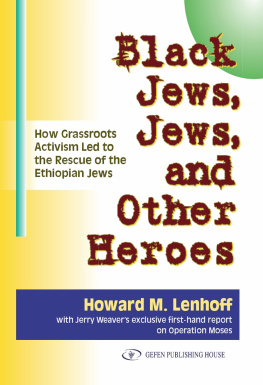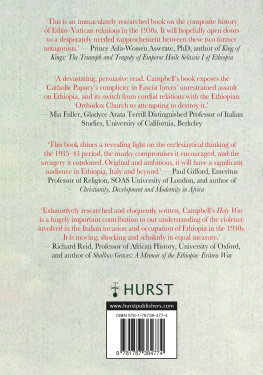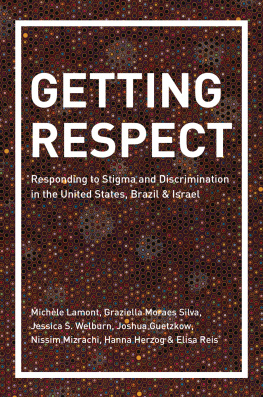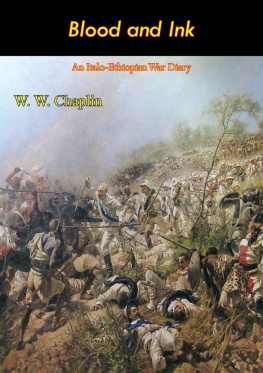From Falashas to
Ethiopian Jews
First Published in 2003
by Routledge
2 Park Square, Milton Park, Abingdon, Oxon, OX14 4RN
Simultaneously published in the USA and Canada
by Routledge
270 Madison Ave, New York NY 10016
Routledge is an imprint of the Taylor & Francis Group
First issued in paperback 2011
2003 Daniel P. Summerfield
Typeset in Photina by LaserScript Ltd, Mitcham, Surrey
All rights reserved. No part of this book may be reprinted or reproduced or utilised in any form or by any electronic, mechanical, or other means, now known or hereafter invented, including photocopying and recording, or in any information storage or retrieval system, without permission in writing from the publishers.
British Library Cataloguing in Publication Data
A catalogue record for this book is available from the British Library
Library of Congress Cataloging in Publication Data
A catalog record for this book has been requested
ISBN10: 0700712186 (hbk)
ISBN10: 0415593034 (pbk)
ISBN13: 9780700712182 (hbk)
ISBN13: 9780415593038 (pbk)
For Zac, Josh and Orli
Contents
The arrival of a Protestant mission in Ethiopia during the 1850s marks a turning point in the history of the Falashas. Up until this point, they lived relatively isolated in the country, unaffected and unaware of the existence of world Jewry. Following this period and especially from the beginning of the twentieth century, the attention of certain Jewish individuals and organisations was drawn to the Falashas. This contact initiated a period of external interference which would ultimately transform the Falashas, an Ethiopian phenomenon, into Ethiopian Jews, whose culture, religion and identity became increasingly connected with that of world Jewry. It is the purpose of this book to examine the external influences that implemented and continued the process of transformation in Falasha society which culminated in their eventual emigration to Israel.
The original research provides an in-depth insight into the processes which were set in motion among the Falashas during the course of the twentieth century. The book begins with a description of their religion, culture and identity before the Falashas exposure to external influences, an analysis which is used to examine and interpret the modifications that subsequently took place in the Falashas society. The missionaries activities, which brought the Falashas to the attention of Western Jewry, are then examined. Considerable attention is devoted to Jacques Faitlovitch who was instrumental in developing the concept of an Ethiopian Jew. His programmes and activities in Ethiopia and abroad, which were fundamental for the success of subsequent endeavours by Israeli organisations, are examined in detail. The Italian occupation of Ethiopia and its impact on the Falashas is also a topic thoroughly researched for the first time. Finally, the activities of Israeli organisations and their impact on the Falashas are examined.
The conclusions of this investigation are based on the results of both archival research and interviews with Falashas and key personalities who worked with them before the 1960s.
I am indebted to the late Mr David Kessler OBE, Honourary President of the Society for the Study of Ethiopian Jewry, for his generous financial support through the David Kessler Bursary in Ethiopian Jewish Studies, without which this research would not have been possible.
I am also extremely grateful to my PhD supervisors, David Appleyard and Tudor Parfitt of the School of Oriental and African Studies, University of London, for their invaluable help and guidance, and to Steven Kaplan of the Hebrew University of Jerusalem, who freely and generously offered his assistance with my research.
Finally, I would like to thank my wife, Juliet, and my parents for their constant support throughout the years.
Although the field of research has been somewhat different from that which was originally conceived at the time of the award of the Bursary, I sincerely hope that this book will nonetheless be viewed as an important contribution to Beta Israel studies.
Apart from references quoted, where due credit has been given to the appropriate sources, the views expressed in this book are my own.
1
Introduction: The Discovery of the Falashas
The Falashas immigration to Israel in the years following 1984 has been seen by various individuals and organisations as the culmination of their long struggle to gain the recognition of the Falashas as Jews. Contemporary researchers have suggested that this process began in the mid-nineteenth century when the Falashas were first brought to the attention of the Jewish world.
Prior to this period, the Falashas lived isolated from the rest of the Jewish world and unaware of its existence. Events that occurred outside Ethiopia and, in particular, developments among Jewish communities had virtually no impact on their condition. From the arrival of the missionaries, however, and especially from the twentieth century onwards, whilst the Ethiopian context rarely ceased to be decisive, numerous external variables came increasingly into play. That is a Jew, first and foremost, who is of Ethiopian origin.
It is the purpose of this book to analyse the external catalysts which gradually transformed the Falashas into Ethiopian Jews from the mid-nineteenth century. This analysis was prompted by a challenge posed by Professor Steven Kaplan I will commence my quest where Kaplan ended his book; on the eve of Ethiopian Jewrys entry into World Jewish history and conclude at a point when the process leading to the creation of an Ethiopian Jew per se, as we now see in Israel, was well under way.
A documentation dealing with an apparent transformation of a peoples identity should begin with an analysis of the situation prior to their change. In order to analyse and interpret the modifications that took place in Falasha society, it will be necessary first to give an account of their religion, culture and identity before their exposure to external forces. In this first chapter, I will thus examine traditional Falasha life in Ethiopia to serve as a basis by which to evaluate the extent of their transformation in the twentieth century.
The sources for our understanding of the Falashas prior to the western worlds discovery of their existence are scarce. Although the rulers of Ethiopia had their reigns recorded in royal chronicles, they give no information about the religion or the cultural or social conditions of the Falashas. Furthermore, although the Falashas possessed a sizeable collection of literature, none of the texts which has reached scholars to date can be used to describe the Falashas traditional religion and culture in any detail.
It is therefore inevitable that, prior to the arrival of the missionaries, our knowledge of the Falashas rests heavily on the writings of foreign observers. It should, however, also be noted that none of the texts prior to the middle of the nineteenth century is concerned with the Beta Israel per se. Instead, they often refer to the Falashas in the context of a wider issue which the author seeks to illustrate. What is more, the value of the sources of observers of the Ethiopian scene varies tremendously with the knowledge and personalities of authors, the character of their involvement with Ethiopia, their opportunities of observing the events and their motives for writing about them. None the less, in spite of the possibility of misinformation, one must turn to the foreign observers to gain a clearer picture of the Falashas prior to the influence of the catalysts of change.



